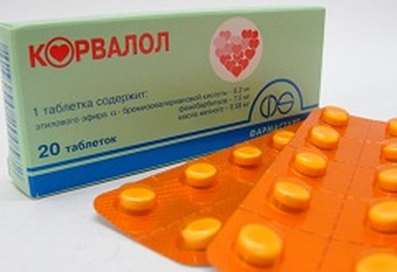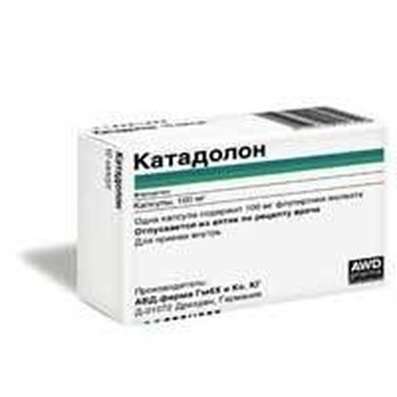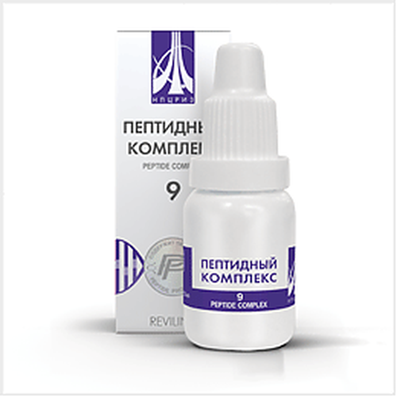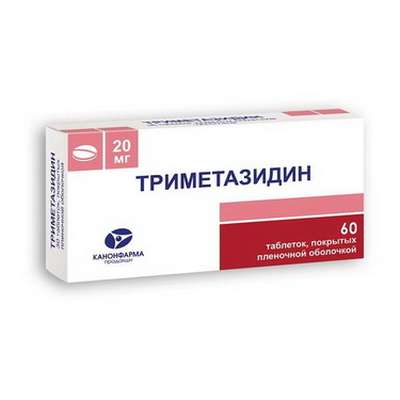Instruction for use: Ovitrellele
I want this, give me price
ATX CodeG03GA08 Choriogonadotropin alfa
Active substance Choriogonadotropin alfa
Pharmacological group
Hormones of the hypothalamus, pituitary gland, gonadotropins and their antagonists
Nosological classification (ICD-10)
N97.0 Female infertility associated with lack of ovulation
Anovulation, Stimulation of ovulation, Stimulation of a single dominant follicle, Stimulation of the growth of multiple follicles, Anovulatory dysfunction of the ovaries, Anovulatory cycle, Induction of ovulation in the treatment of infertility, Infringement of an ovulation, Anovulatory infertility, Infertility due to anovulation or inadequate maturation of the follicle, The hormone-dependent pathology of the reproductive system, Anovulation chronic, Anovulatory cycles, Infertility associated with anovulation, Incomplete maturation of the follicle
Z31.1 Artificial insemination
Fence of egg, ICSI (Intra Cytoplasmic Sperm Injection), Controlled ovarian stimulation, Controlled superovulation, Controlled superovulation in artificial insemination, Treatment of insemination, Fertilization artificial, Premature ovulation, The IVF program, The program of in vitro fertilization, Superovulation
Z31.2 In Vitro Fertilization
Support of the luteal phase in the spontaneous or induced menstrual cycle, Support of the luteal phase during preparation for in vitro fertilization, Reproductive technologies, Superovulation, ECO, In Vitro Fertilization, Controlled superovulation in in vitro fertilization
Composition
Lyophilizate for the preparation of a solution for subcutaneous administration 1 filled syringe
active substance:
Choriomonadotropin alfa 250 μg (6500 IU)
Excipients: mannitol - 27.3 mg
Description of dosage form
Liofilizate for the preparation of solution for s / c introduction - powder or porous mass of white or almost white.
Solution for subcutaneous administration - transparent or slightly opalescent, colorless or light yellow in color.
Characteristic
Recombinant choriomonadotropin alfa has the same amino acid sequence as the human chorionic gonadotropin contained in the urine.
pharmachologic effect
Pharmacological action - gonadotropic, luteinizing.
Pharmacodynamics
Ovitrelle® contains choriogonadotropin-alpha (HG-alpha), which is produced by recombinant DNA technology. It has the same amino acid sequence as the natural human HC. HG binds transmembrane LH receptors on the surface of teki and ovarian granulosa cells. Causes initiation of oocyte meiosis, rupture of follicles (ovulation), formation of a yellow body, production of progesterone and estradiol by a yellow body.
Pharmacokinetics
Absorption and distribution. After intravenous administration of HG, alpha is distributed into the extracellular fluid with a half-life period of about 4.5 h.
The stationary Vd and the total ground clearance are 6 l and 0.2 l / h, respectively.
With subcutaneous administration of CG alpha, the absolute bioavailability is approximately 40%, the final T1 / 2 is about 30 hours.
Excretion and metabolism. Metabolism and excretion of HG alpha are similar to endogenous HG.
Indications
In the protocol of induction of multiple maturation of follicles for auxiliary reproductive technologies (ART), incl. For in vitro fertilization (IVF), in order to induce the final maturation of follicles and luteinization after stimulation with gonadotropins;
With anovulatory or oligo-ovulatory infertility for induction of ovulation and luteinization at the end of stimulation of follicle growth.
Contraindications
Hypersensitivity to the active component and to any of the auxiliary components included in the formulation;
Tumors in the hypothalamus and pituitary;
Voluminous ovarian neoplasms or cysts unrelated to polycystic ovary;
Vaginal bleeding of unknown origin;
Malignant neoplasms of the ovary, uterus or breast;
Ectopic pregnancy within 3 previous months;
Thromboembolism;
Primary ovarian failure;
Congenital malformations of the reproductive organs incompatible with pregnancy;
Uterine fibroids, incompatible with pregnancy;
Postmenopause.
Caution should be given to Ovitrelle® in patients with serious systemic diseases when pregnancy can lead to their exacerbation.
pregnancy and lactation
During pregnancy and breastfeeding, Ovitrelle® is not prescribed. There is no data on the excretion of CG alpha in breast milk.
Side effects
When Ovitrelle® is used, side effects can occur which, depending on the frequency of onset, are regarded as very frequent (≥1/10), frequent (≥1 / 100 and <1/10), infrequent (≥1 / 1000 and <1 / 100), rare (≥1 / 10000 and <1/1000), very rare (<1/10000, including single messages).
The frequency of side effects in each group is listed in descending order. Depending on the frequency of occurrence, side effects can be divided into groups:
From the immune system: very rarely - from mild to severe hypersensitivity reactions, including anaphylactic reactions and shock.
From the side of the central nervous system: often - a headache. Infrequently - depression, irritability, agitation.
From the side of the vascular system: often - thromboembolism, usually associated with a severe form of ovarian hyperstimulation syndrome (OSS).
On the part of the digestive system: often - nausea, vomiting, abdominal pain, infrequently - diarrhea.
From the skin and subcutaneous tissue: very rarely - easy reversible skin reactions in the form of rashes.
On the part of the reproductive system and mammary glands: often - HSH of mild or moderate severity, infrequent - severe form of HHV, tenderness of mammary glands.
General and local reactions: often - fatigue, reactions at the injection site.
Interaction
Data on interactions with other drugs are not available. Nevertheless, the patient should inform the doctor about all drugs (including OTC drugs) that she is currently or recently taking.
Dosing and Administration
PC. Each vial or syringe is for single use only.
When applied in the induction protocol of multiple follicular maturation for assisted reproductive technologies (including IVF) to induce the final maturation of follicles and luteinization after stimulation with preparations of gonadotropins, Ovitrelle® at a dose of 250 μg (the contents of 1 vial or 1 syringe) is administered once through 24-48 h after the last injection of FSH or LH and the optimal level of follicle development.
With anovulatory or oligovulatory infertility for induction of ovulation and luteinization at the end of stimulation of Ovitrelle® follicle growth at a dose of 250 μg (the contents of 1 vial or 1 syringe) is administered once 24-48 hours after the last injection of FSH or LH and the optimal level of follicle development. It is recommended to have sexual intercourse on the day of drug administration and the next day.
The order of self-administration of the drug
1. Wash hands.
2. Prepare a clean surface and spread out on it: 2 tampons moistened with alcohol (not applied to the package), 1 syringe with the drug.
3. Next, you should immediately inject (in the abdomen or the front of the thigh). To do this, wipe the selected area with a swab with alcohol. Strongly tighten the skin with your fingers and, by directing the needle at an angle of 45-90 ° in the skin fold, make a s / c injection. It is necessary to avoid getting the drug into a vein. The drug is administered slowly, gently pressing the piston. After removing the needle, wipe the place of injection with a swab with alcohol in a circular motion.
4. Immediately after the injection, the used syringe should be placed in a container for storing sharp objects. All unused volume should be destroyed.
Overdose
Data on drug overdose are absent.
Symptoms: it is possible to develop HHV, characterized by the formation of large ovarian cysts with the risk of their rupture (perforation), the development of ascites and circulatory disorders.
Treatment: at a high risk of development of HNS, it is recommended to cancel the introduction of human HG. Patients for at least 4 days are recommended to refrain from sexual contact or use barrier methods of contraception.
special instructions
Before the beginning of treatment it is necessary to establish the causes of infertility in the patient and her partner and to assess the presumed risk factors for the onset of pregnancy. You should take into account the presence of clinically pronounced hypothyroidism, adrenal insufficiency, hyperprolactinaemia, as well as tumors of the hypothalamic-pituitary region in the anamnesis and the specific therapy methods used.
In the process of stimulation of the ovaries, patients are at risk of developing CHD because of the simultaneous ripening of a large number of follicles. OCS of severe severity can be a serious complication of stimulation. In order to reduce the risk of this complication in the protocol of stimulation of the growth of the follicles, careful monitoring of the ovarian response by ultrasound and the determination of the level of estradiol in the blood before and during the course of treatment are recommended.
In comparison with natural fertilization, the risk of multiple pregnancies increases during stimulation. In most cases, twins are born. When using methods of assisted reproduction, the number of babies born corresponds to the number of embryos transferred to the uterine cavity.
Statistics of miscarriages after treatment of anovulatory infertility (including with the help of ART) exceed the average for the population, but comparable with other types of infertility.
The administration of Ovitrelle® can influence the immunological picture of the level of human HG in serum and urine for 10 days and lead to the appearance of a false positive reaction during a pregnancy test.
During the treatment with Ovitrelle®, slight stimulation of thyroid function is possible.
Before the beginning of treatment it is necessary to establish the causes of infertility in the patient and her partner and to assess the presumed risk factors for the onset of pregnancy. Especially should take into account the symptoms of hypothyroidism, adrenocortical insufficiency, hyperprolactinaemia, the presence of tumors of the pituitary or hypothalamus, and the specific methods of therapy used.
Ovarian hyperstimulation syndrome (OSS)
In the process of stimulation of the ovaries, the risk of the occurrence of HNV is increased because of the simultaneous ripening of a large number of follicles. OHSS can be a serious complication characterized by the formation of large ovarian cysts with the risk of their rupture, weight gain, dyspnea, oliguria, or the presence of ascites in the clinical picture of circulatory disorders. CJS severe in rare cases can be accompanied by hemoperitoneum, acute pulmonary distress syndrome, ovarian torsion and thromboembolism.
In order to reduce the risk of OHSS in the protocol of stimulation of the growth of the follicles, careful monitoring of the ovarian response with ultrasound and the determination of the level of estradiol in the blood before and during the course of treatment are recommended.
With anovulation, the risk of developing CHD increases with an estradiol concentration in the blood plasma> 1500 pg / ml (5400 pmol / L) and the presence of more than 3 follicles with a diameter of 14 mm or more. In ART, the risk of developing hypoglycemia increases with an estradiol concentration> 3000 pg / ml (11000 pmol / L) or 18 or more follicles with a diameter of 11 mm or more.
OCG caused by an excessive response of the ovary can be avoided by reversing the administration of human HG. Therefore, if serum estradiol levels> 5500 pg / ml (20,000 pmol / L) and / or when 30 or more follicles are present, abstain from using human HG. Patients are advised to refrain from coition or use barrier methods of contraception for at least 4 days.
Multiple pregnancy
In comparison with natural fertilization, the risk of multiple pregnancies increases during stimulation. In most cases, twins are born. When using methods of assisted reproduction, the number of babies born corresponds to the number of embryos transferred to the uterine cavity.
The use of recommended doses of Ovitrelle®, treatment regimens and careful monitoring in the course of therapy minimize the risk of occurrence of OHV and multiple pregnancies.
Unintention of pregnancy
Statistics of miscarriages after treatment of anovulatory infertility, including with the help of ART, exceed the average for the population, but comparable with other types of infertility.
Ectopic pregnancy
Patients with tubal diseases have a history of increased risk of ectopic pregnancy, regardless of whether pregnancy is obtained by the usual route or in the treatment of infertility. The probability of ectopic pregnancy after the use of assisted reproductive technologies is higher than in the general population.
Congenital malformations
The frequency of congenital anomalies after the application of ART programs can be slightly higher than with natural pregnancy and childbirth. Nevertheless, it is not known whether this is due to the peculiarities of the parents (for example, the age of the mother, the quality of the sperm) and the multiple pregnancy or directly with the ART procedures.
Thromboembolic complications
In patients with recent or current thromboembolic disease, as well as a possible risk of their occurrence in the presence of a history of disease or with relatives, the use of gonadotropins may increase this risk or complicate the course of these diseases. For patients in this group, the benefits of therapy should be correlated with the possible risk.
It should be noted that pregnancy itself, like the OHSS, carries an increased risk of thromboembolic disorders, such as pulmonary embolism, ischemic stroke, or myocardial infarction.
Impact on laboratory performance
Administration of Ovitrelle® may affect the immunological picture of hCG levels in blood serum and urine for 10 days and lead to a false positive reaction during the pregnancy test.
other information
During the treatment with Ovitrelle®, slight stimulation of thyroid function is possible.
If the manifestations of adverse reactions increase or develop side effects not mentioned in the instructions, it is necessary to inform the attending physician about it.
During the expiration date, the drug can be stored outside the refrigerator at a temperature of no higher than 25 ° C for 30 days. If after 30 days of such storage the drug has not been used, it must be destroyed.
Influence on the management of vehicles. Virtually does not affect the management of the vehicle or any other mechanism.
Form of issue
Solution for subcutaneous administration, 250 μg / 0.5 ml. 0.5 ml of a solution containing 250 μg (6500 IU) of choriogonadotropin alfa. In a colorless glass syringe with an injection needle, closed with a protective cap with a rubber gasket. The syringe is packed in a plastic container, placed in a cardboard box.
Terms of leave from pharmacies
On prescription.
storage conditions
At a temperature not exceeding 25 ° C.
Keep out of the reach of children.
Shelf life
Lyophilizate for the preparation of a solution for subcutaneous administration of 250 mcg - 2 years. Solvent - 3 g.
Solution for subcutaneous administration of 250 mcg / 0.5 ml - 2 years.
Do not use after the expiry date printed on the package.

 Cart
Cart





